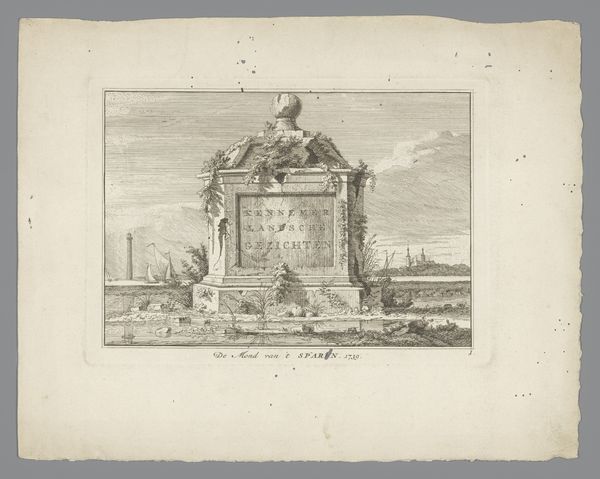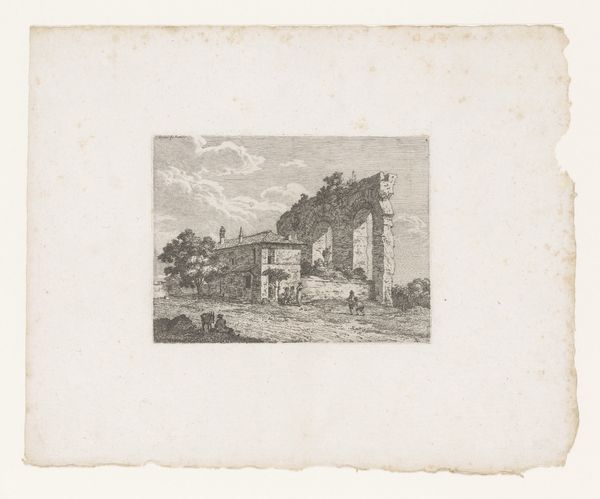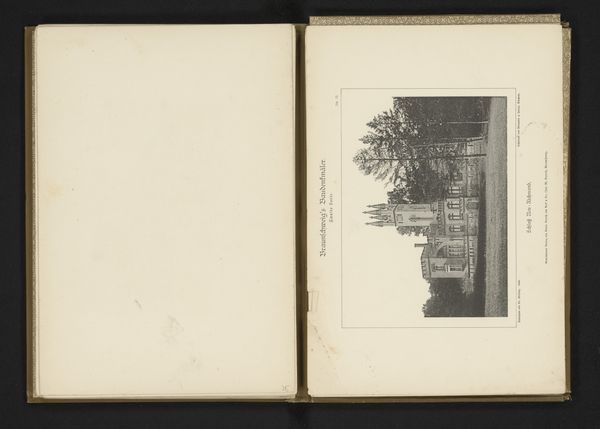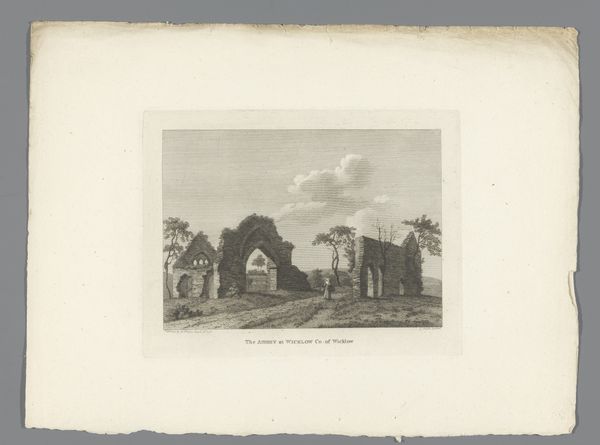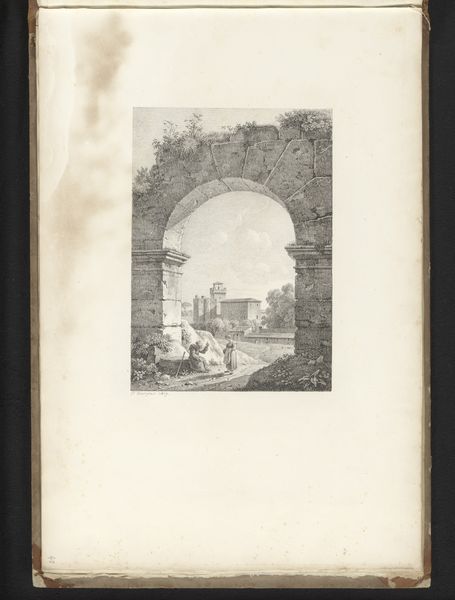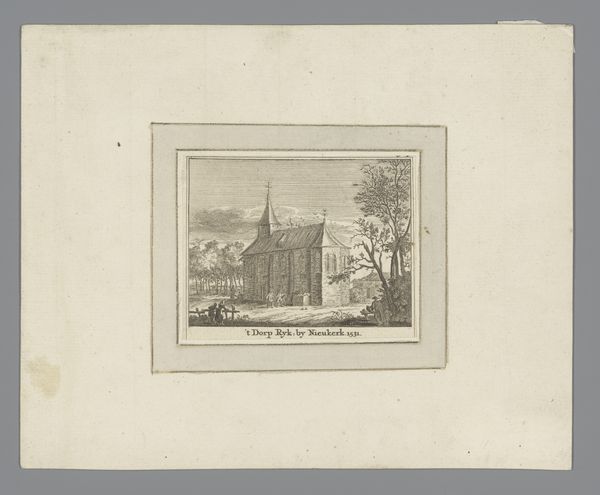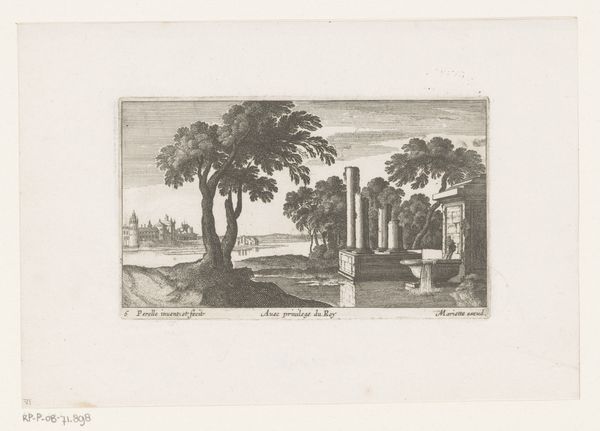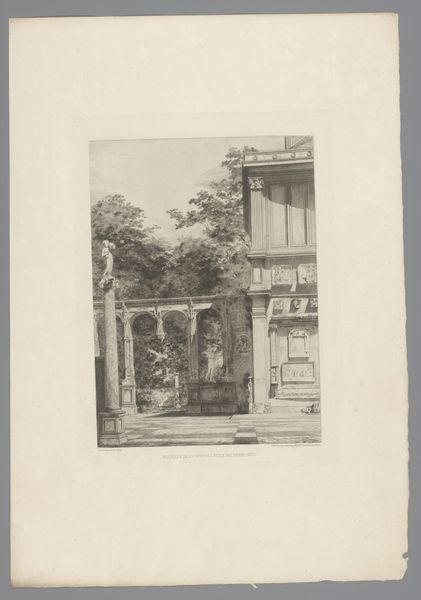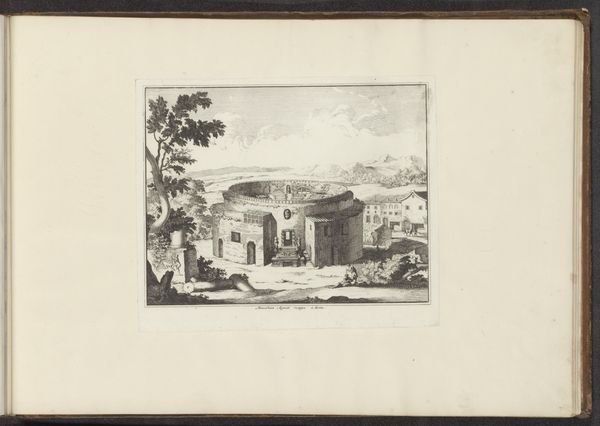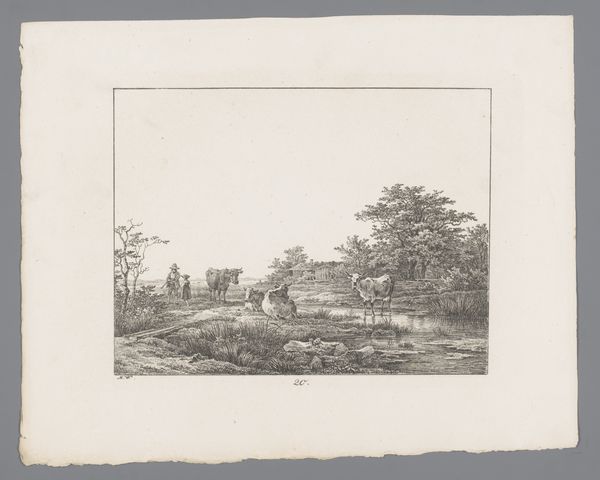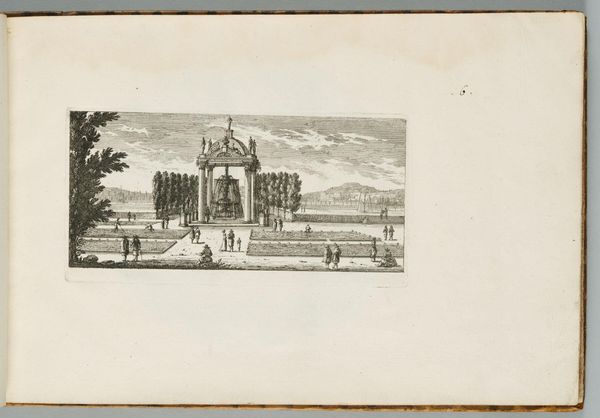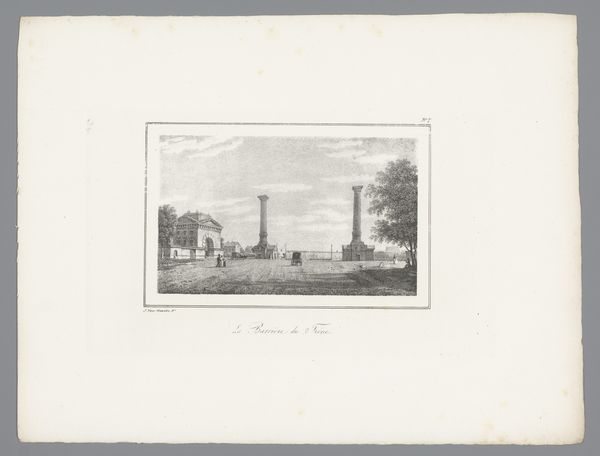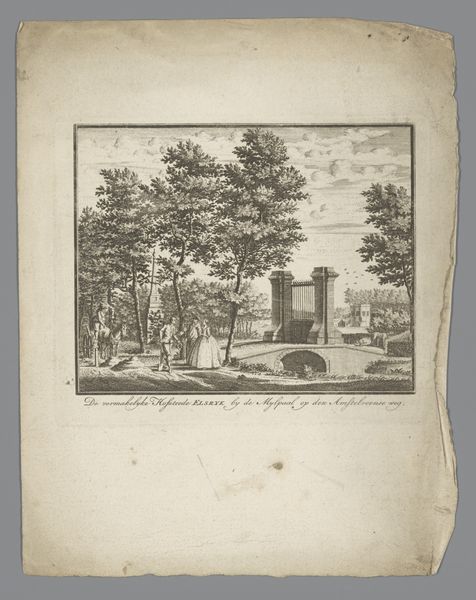
drawing, print, paper, engraving
#
drawing
#
neoclacissism
# print
#
landscape
#
paper
#
romanticism
#
genre-painting
#
engraving
Dimensions: height 165 mm, width 194 mm
Copyright: Rijks Museum: Open Domain
Editor: This is "Jongen met een emmer bij een put of drinkbak," or "Boy with a bucket at a well or drinking trough," an anonymous print from somewhere between 1800 and 1825, currently housed at the Rijksmuseum. There is something serene and unsettling in equal measure to the isolation of the figure within the landscape. How do you interpret this work? Curator: It’s important to consider the period this piece emerged from. The late 18th and early 19th centuries were rife with social upheaval and shifts in power dynamics, particularly as colonialism intensified. Given that, and keeping in mind that the figure is an anonymous boy, it brings forward uncomfortable questions about labor, childhood, and even the romanticization of rural poverty as a foil to increasingly industrialized urban life. What narratives do you think were intentionally left out of the image? Editor: That's interesting. I hadn't thought about the colonial undertones. I suppose the boy's solitude, originally perceived as peaceful, takes on a new layer of meaning when considering that omitted narrative. The labor and lack of visible family suggests vulnerability. Curator: Precisely. Think about what isn’t shown – where are the other villagers, adults, or even animals that might frequent a watering hole? The omission contributes to this sense of isolation and perhaps hints at the precarity of his existence. How might that contextual understanding impact our appreciation of the artist's aesthetic choices? Editor: It really changes the way I see the piece. What I initially saw as simple pastoral beauty, now feels like a commentary on class, labor and maybe even the lack of social safety nets for children at the time. I will carry this forward. Curator: Art allows us to excavate these forgotten or suppressed histories. By looking critically, we can expose the complicated stories etched within, enriching both the artistic experience, as well as our understanding of each other.
Comments
No comments
Be the first to comment and join the conversation on the ultimate creative platform.
